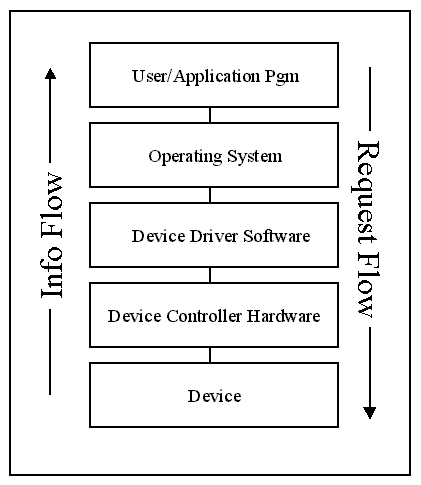
Device Management
There is wide variety of devices that an operating system should handle. Some are fast, some are slow; some are sharable (eg disks), some must be used in an orderly fashion (eg printers); some are no sharable (eg mouse).
The physical properties of these devices are also very different from each other. The way a printer should be controlled is much different than the way a hard disk is to be controlled.
The operating system should be aware of all the technical details of a device that is connected to the computer and this is a serious problem if you consider a new device appears every week in the market.
To solve this complex problem, the following management scheme is used in modern operating systems:

When a user application program needs to access a resource device, the request is passed to the operating system because normally a user application wouldn't know how to handle the device. For example, the application might want to play some sound on the multimedia device of the computer and normally the application (game program for example) wouldn't know what sort of sound facilities are installed; even if such a facility is installed at all.
Therefore the user application sends a request to the operating system.